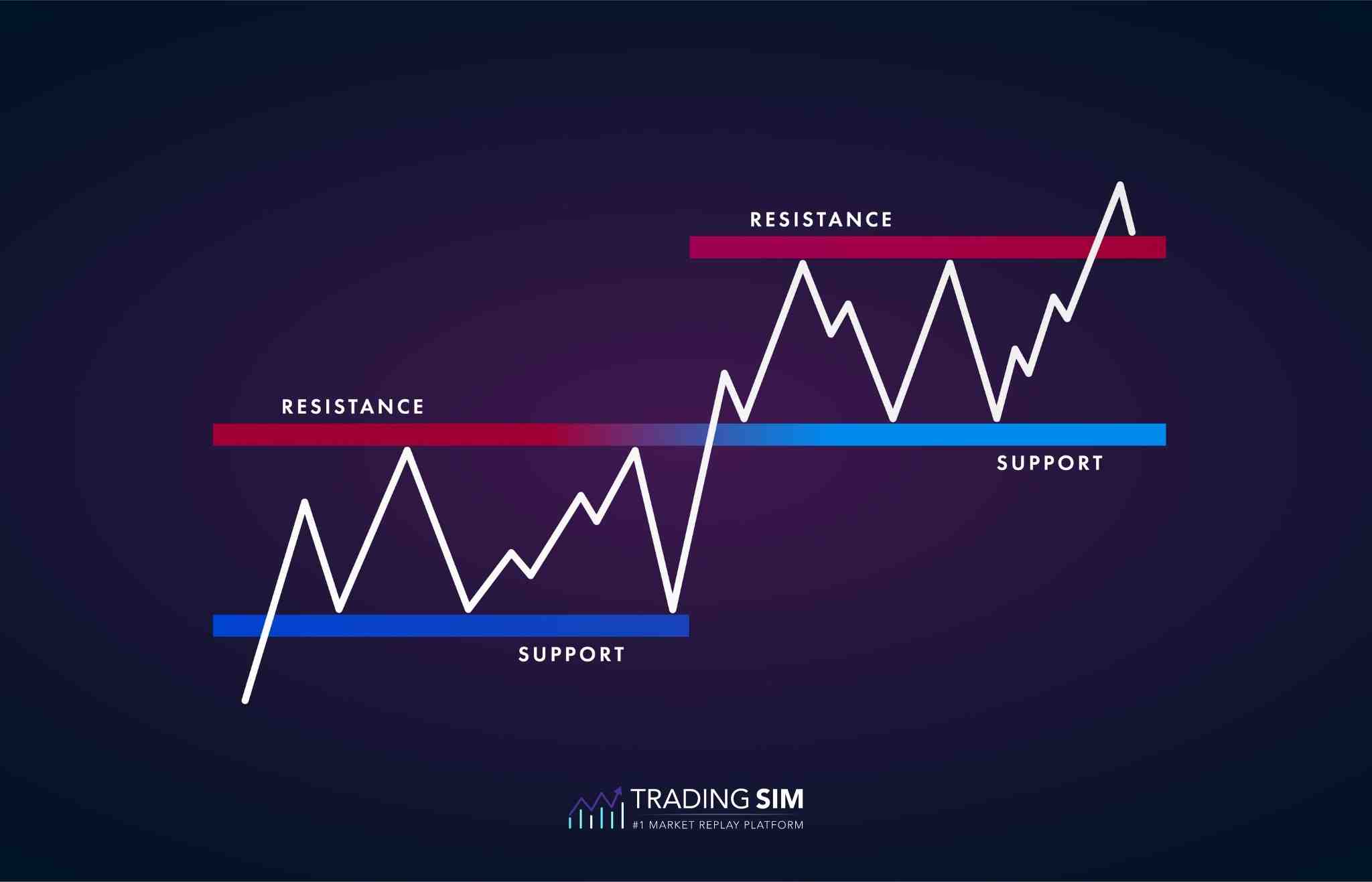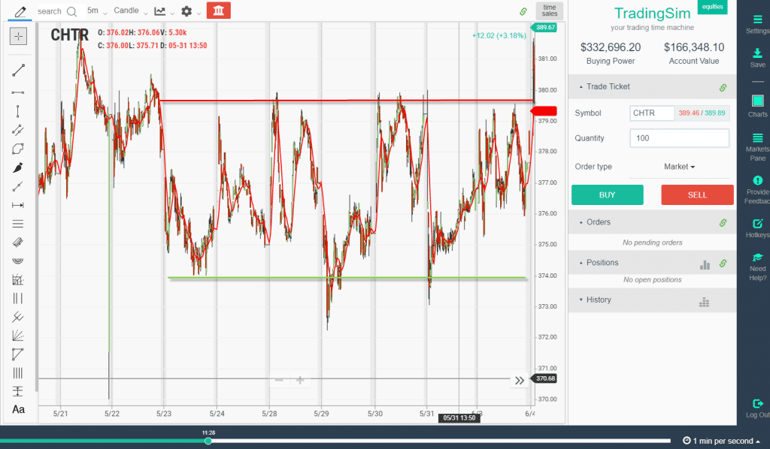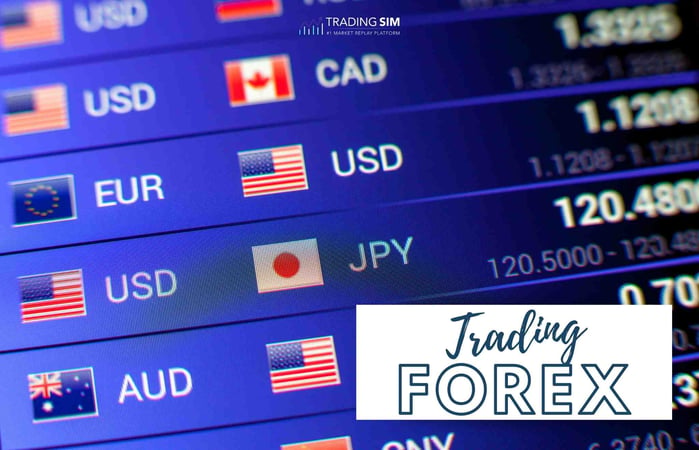What is forex day trading?
Forex day trading involves buying and selling foreign currency pairs during the trading day to profit from intraday price movements without holding any open positions overnight. Traders who execute intraday trades are called day traders or intraday traders. Forex day traders commonly use different trading strategies, such as trend trading, countertrend trading, range trading, breakout trading, and news trading, to capitalize on intraday price moves.

Is forex good for day trading?
The forex market provides day traders with several advantages over trading shares on the stock market. Traders do not have to pay commission, exchange fees, brokerage fees, and government fees, which stock day traders usually pay. So, by trading forex, forex day traders can lower their trading costs.
Day traders often use leverage to maximize their gains, and forex brokers easily provide leverage as high as 100:1 or 50:1. Such high leverage is usually not available for stock traders; the maximum leverage allowed to traders in the stock market is either 2:1 or 4:1 for pattern day traders.
The forex market is extremely liquid with an enormous number of buyers and sellers available at any point in time. Because day traders open and close trades in a short span, they require highly liquid markets to carry out intraday trades and make a profit from short price movements.
To be eligible for day trading in the stock market, you need to have a minimum equity balance of $25,000. In contrast, there are no minimum balance requirements for trading forex. Many forex brokers allow you to open a forex trading account with as little as $50. The low minimum balance requirement allows even undercapitalized traders to start forex day trading.
How does forex day trading work?
Forex day trading is similar to stock trading, except that the former involves buying and selling currency pairs instead of company shares. In other words, you sell one currency and buy the other one simultaneously in the pair.
Each currency pair has a base currency and a quote currency. The base currency is the first currency in the price quote and is always equal to 1, whereas the second currency in the price quote is called the "quote currency." For example, in the EUR/USD price quote of 1.0209, the euro is the base currency and the USD is the quote currency. The price quote denotes that 1 euro equals 1.0209 U.S dollars.
If you buy the EUR/USD currency pair, you actually buy the base currency, which, in our case, is the euro. You are selling the quote currency, the USD. Conversely, if you sell the EUR/USD currency pair, you sell the base currency, the euro, and buy the quote currency, the USD.
The prices of currency pairs are quoted in the bid and ask prices. The bid price is the price at which you can sell the base currency in a currency pair in exchange for the quote currency. This is the price at which your broker or another trader is willing to buy the base currency from you in exchange for the quote currency.
Conversely, the asking price is the price at which you can buy the base currency in a currency pair in exchange for the quote currency. At this price, your broker or another trader is willing to sell the base currency to you in exchange for the counter currency.
How much do forex traders make a day?
Your forex trading profits depend on a lot of factors, including your trading strategies, risk management techniques, and your initial capital. Theoretically, if your winning trades exceed your losing trades, assuming your winning trades make more than your losing trades, you can be a profitable trader. While determining the exact dollar amount is difficult, one can assume that if you have more than a 50% win rate and your winning trades earn more than your losing trades, you can expect to earn at least a 20% return per month on your initial capital because of the leverage.
Forex day-trading rules
The Financial Industry Regulatory Authority (FINRA) has pattern day trading rules in place for stock traders. The rules outline certain conditions, such as the minimum equity requirements, which pattern day traders must meet to continue day trading stocks. However, these rules do not apply to forex trading, and forex traders can freely day-trade without worrying about meeting the minimum equity requirements.
Still, forex traders need to follow the general rules related to forex trading, such as initial margin requirements, maintenance margin, and margin calls. Many brokers allow you to trade with a 1% margin, which means that you can open trades worth 100 times more than the amount you have in your trading account.
For example, if you have $1,000 in your margin account, you can open trades worth $100,000. The 1% margin is called the initial margin, which determines the amount you must have before initiating a trade. In our example above, if you wanted to open a trade worth $100,000, you must have 1% of the total position’s value ($100,000 x 1%) = $1,000 in your account to initiate the trade.
The maintenance margin is usually 50% to 75% of the initial margin, which means that if you have opened a trade with the initial margin in your account, you’ll have to keep around 50% to 75% of your initial margin in your account. If you suffer losses on your position and your account value drops below the maintenance margin amount, you’ll get a margin call from your broker. When your broker raises a margin call, you’ll have to deposit additional money into your account to bring your account balance back to the maintenance margin amount.
What is a pip in forex?
A pip is short for percentage in point, which determines the change in the value of a currency in relation to the second currency in a currency pair. It is the smallest movement a currency pair can make. For example, if the price of the EUR/USD currency pair changes from 1.0191 to 1.0196, the 0.0005 change in price would be equal to 5 pips. One pip for all currency pairs that are quoted up to 4 decimal points is equal to 0.0001, or 1/100 of a percentage point. The cash value of a pip depends on the currency pair and its pip value.
What is a lot in forex?
A lot in forex refers to the number of currency units a trader buys or sells. For example, the standard size lot has 100,000 units of currency. The following table describes different lot sizes, along with their equivalent units of currencies, available to traders in the forex market:
| Lot |
Number of Currency Units |
| Standard |
100,000 |
| Mini |
10,000 |
| Micro |
1,000 |
| Nano |
100 |
What is a spread in forex?
In forex, spread refers to the difference between the bid and ask price of a currency pair. For example, if the bid price of the EUR/USD is 1.0187 and the asking price is 1.0182, the spread would be the difference between the bid and ask price, which is $0.0005 for trading a single unit of currency. Forex brokers mostly don’t charge commissions but charge spreads as compensation for their services.
The asking price is always higher than the bid price because brokers or market makers will always sell at a higher price (ask price) and buy from you at a lower price (bid price). Average spreads on the most liquid, major currency pairs such as the EUR/USD, and GBP/USD are very low, while they are higher for comparatively less liquid currency pairs.

What is forex scalping?
Scalping is an intraday trading strategy in which traders quickly go in and out of trades to generate quick profits from small price movements. Because scalpers capitalize on small price movements - between five to ten pips per trade - they use leverage, open large positions, and trade frequently to turn small gains into sizable profits.
Forex scalpers use technical analysis and analyze short-term price action to generate trading signals. Based on the trading signals, they make their buy or sell decisions. Scalpers mostly use one-minute and tick charts to find trading signals. Some scalpers also capitalize on potential external market triggers, such as the release of important economic data, monetary policy announcements, and news.
Three best forex scalping strategies
Here are the three best forex scalping strategies that you can learn and apply to your trading:
1 - Breakout Scalping Strategy
A breakout on a price chart occurs when the price moves out of a range, piercing either the support or resistance level. Before the breakout, the price usually makes a few unsuccessful attempts at breaking the support or resistance levels on a 30-minute chart. When the price again reaches near the support or resistance level, traders confirm whether the price momentum is backed by an increase in volume. The confirmation is necessary as the breakout could be fake, with the price reverting to the previous range.
If the price momentum is backed by a jump in volume, the breakout could be real and the trader can continue with the trade. A long trade is initiated if the price breaks the resistance level, whereas short trade is placed when the price breaks the support level.

2 - Reversal Scalping Strategy
The reversal scalping strategy involves identifying and capitalizing on reversal or retracements in short-term price trends. Because predicting troughs and peaks accurately are quite difficult, traders try to find short-term pullbacks and trade them to make small, quick profits. The risk in executing such trades is limited as they aim to profit from minor pullbacks.
To confirm the onset of pullbacks and retracements, traders use momentum oscillators, such as the Stochastic Oscillator and Relative Strength Index (RSI). The Stochastic oscillator is particularly useful in determining the strength of price action and depicts overbought and oversold conditions.
The RSI oscillator can also be used to determine levels where price action shows weakness. Generally, RSI readings above 70 show overbought levels and one can anticipate the onset of weakness from this level. If the price level moves to the 90 RSI level, this could be an even stronger sign of an imminent reversal. The trader can put a short trade and place a stop loss a few pips above the entry point. This would be a high probability trade as the Stochastic and RSI oscillators could give you reasonable hints of a reversal or pullback from which you can make a profit.
3 - Range-Trading Scalping Strategy
Range-trading scalping strategy works best in ranging markets. To execute this strategy, you need to plot support and resistance lines on a higher time frame price chart to determine whether the price is trading in a range. If it is confirmed that the market is indeed trading in a range, you can expect the price to bounce off the support and resistance levels. You need to monitor the trading volume when the price nears the support or resistance levels to predict the movement of price. For example, a significant spike in trading volume near the support or resistance level could confirm a breakout. In contrast, no unusual change in trading volume near those levels could imply that the price would continue in the range.

You can place a buy-limit order if the price reaches the support level because you expect the price to bounce back and continue to the resistance level. You can also place your stop-loss just beneath the support level, allowing you to make a significant profit at low risk.
What is hedging in forex?
Hedging in forex is a risk management strategy that is used to protect the gains or limit the losses on an open forex position. Traders use hedging techniques to protect their positions from abrupt market moves. To hedge a position, a trader can either open an inverse or opposite position to their existing position in the same currency pair. Alternatively, some traders buy forex options as part of their hedging strategy.
Day Trading Forex Summary
Day trading forex can be a profitable activity if you learn the ins and outs of forex trading. Thankfully, you can start day trading forex with very little capital, and you don’t have to face pattern day trading restrictions applied to stock day traders. If you are undercapitalized, you can also get leverage or a loan from your broker to open large trades. However, leverage can magnify your gains as well as losses, so you should be careful using it.
Many forex day traders adopt forex scalping strategies, which are used to profit from small movements by quickly moving in and out of trades. If you want to learn forex day trading, you can consider opening a demo account with a broker and try different forex trading strategies to test their effectiveness. With the passage of time, you’ll gain experience and become a markedly better trader.












 Day Trading Basics
Day Trading Basics 
